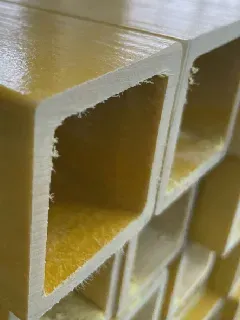loading...
- No. 9, Xingyuan South Street, Dongwaihuan Road, Zaoqiang County, Hengshui, Hebei, China
- admin@zjcomposites.com
- +86 15097380338
- Welcome to visit our website!
Innovative Applications and Benefits of Molded Fiber Reinforced Plastics in Modern Industries
Understanding Molded FRP A Sustainable Solution for Modern Applications
Fiberglass reinforced plastic (FRP) has emerged as a transformative material in various industries, thanks to its unique properties and versatility. Among the different forms of FRP, molded FRP stands out for its ability to be shaped into complex geometries while maintaining strength and durability. This article aims to explore the benefits, manufacturing processes, and applications of molded FRP, highlighting its relevance in today's sustainable manufacturing landscape.
Understanding Molded FRP A Sustainable Solution for Modern Applications
One of the most compelling aspects of molded FRP is its sustainability. The material is often produced using resin systems that have been designed to reduce the environmental impact. Furthermore, molded FRP components can be manufactured with significant recycled content, contributing to a circular economy. As industries worldwide strive to minimize their carbon footprints, the demand for eco-friendly materials has surged. Molded FRP meets this need, as it also requires less energy to produce compared to traditional materials, aligning perfectly with global sustainability goals.
molded frp

The manufacturing process of molded FRP can vary depending on the desired characteristics of the final product. Common methods include hand lay-up, spray-up, and compression molding. Each technique offers distinct advantages, such as improved finish quality, reduced labor costs, and enhanced production efficiency. For instance, the hand lay-up method allows for greater control over the fiber orientation and the quality of the fiber-resin bond, making it suitable for high-performance applications. On the other hand, compression molding is excellent for producing large quantities of consistent parts in a shorter time frame.
Molded FRP has found applications in a wide range of industries, including transportation, building and construction, and even consumer goods. In the transportation sector, molded FRP is used for manufacturing lightweight panels for vehicles, which can significantly improve fuel efficiency. In building and construction, it serves as an excellent choice for roofing, cladding, and structural components due to its resistance to corrosion and degradation. The waterproof nature of molded FRP also makes it an ideal material for components exposed to harsh environmental conditions, such as bridges and marinas.
Moreover, the aesthetic versatility of molded FRP cannot be overlooked. The material can be manufactured in various colors and finishes, allowing designers to create visually appealing products while maintaining functionality. This is particularly beneficial in architectural applications, where both form and function are of utmost importance.
In conclusion, molded FRP represents an innovative and sustainable solution for the challenges faced by modern industries. Its unique properties, combined with its eco-friendly production methods, make it an ideal choice for a variety of applications. As technology continues to advance, and the need for sustainable materials increases, it is likely that molded FRP will play an even more significant role in shaping the future of manufacturing and construction. Embracing molded FRP can contribute not only to performance improvements but also to the overarching goal of achieving a more sustainable and responsible industry.
-
Premium FRP Handrail for All ApplicationsNewsAug.29,2025
-
Low Maintenance FRP Mini Mesh Grating ProductsNewsAug.29,2025
-
Innovative FRP Square Tubes for Modern Industrial SolutionsNewsAug.29,2025
-
FRP Water Storage Tanks Wholesale Solutions for Bulk BuyersNewsAug.29,2025
-
FRP Molded Grating Solutions for Diverse Industrial ApplicationsNewsAug.29,2025
-
Construction Advancements Through FRP Pultruded ProfilesNewsAug.29,2025
-
Why Choose FRP Railings, Guardrails, and Handrail Systems?NewsAug.29,2025
